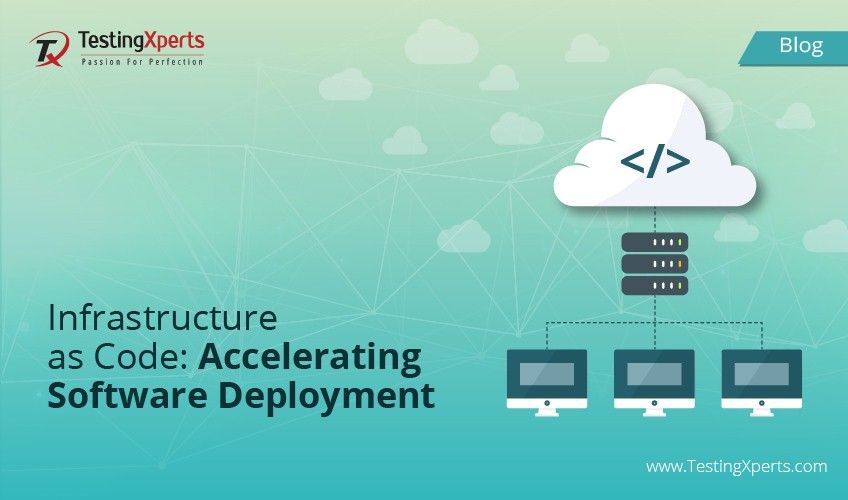
Introduction
The next-generation infrastructure management technologies are transforming the way we manage IT infrastructure. The extensive implementation of virtualization and cloud infrastructure has shifted the bottleneck from allocating servers to configuring them. The arduous process where it used to take a couple weeks or months to assign a server, has been transformed into a process of a minute or two.
Contents
1. Disadvantages of Performing Infrastructure Manually
2. What is Infrastructure as Code?
3. Why Infrastructure as Code?
4. Benefits of Infrastructure as Code
4.1 Agility
4.2 Competency
4.3 Less Risk Involved
However, Infrastructure managers are often performing this provisioning of the infrastructure manually. The manual processes have certain disadvantages, such as:
Disadvantages of Performing Infrastructure Manually
• Higher cost
• Lack of agility
• Inconsistency due to human error
• Difficulty in attaining and maintaining compliance
The older methods of infrastructure management, i.e., manual processes and documentation, single-purpose scripts, and graphical user interface based tools had their usage in the past. However, with the continuous need to scale infrastructure, adoption of temporary infrastructure, new ways of keeping things regimented are needed. To exterminate these disadvantages and to bring agility into the process, automation is required. Infrastructure as Code has surfaced as a best practice for automating the provisioning of infrastructure services.
What is Infrastructure as Code?
The arrival of tools such as Ansible, Puppet, SaltStack, and Chef, have enabled developers and sysadmins to maintain modular, automatable infrastructure, and delineate them using a domain-specific language. This advancement in technology has been named as Infrastructure as Code (IAC). As the name suggests, infrastructure as code is the practice of considering infrastructure as if it were code. This innovative concept helps in managing the operations environment in the similar way you do applications or other code for release. It brings about repeatable, consistent practices for provisioning and changing systems and its configuration.
Why Infrastructure as Code?
Today’s businesses need an extra responsive IT environment; they demand the capability to change and adapt the IT functionality to support the business’ changing needs in a better way. IaC is becoming a much-needed way of dealing with the increasing complexities of an organization’s IT infrastructure. Implementing cloud and automation tools rapidly lower obstacles for making changes to infrastructure.
By using infrastructure as code, software deployment method can be made more agile for today’s fast-paced DevOps environment.
Benefits of Infrastructure as Code
Here are various benefits of Infrastructure as Code that you must read and implement Infrastructure as Code in your business.
With IaC, there is no need for the operations team to rely on cumbersome processes and practices to deploy software updates. IaC standardizes the process cutting down time, which is a significant factor in today’s DevOps environments.
With the IaC approach, there is no need for reinventing the wheel every time you set up a new version of the software. All the important instructions needed, are captured already in the code, making the process much more seamless and efficient.
Extensive deployments in enterprises are designed carefully, as the risk tolerance for failure is very low. IaC, therefore, reduces the risk of human error.
So how can one use Infrastructure as Code for testing infrastructure? Stay tuned for more updates.
Discover more
Get in Touch
Stay Updated
Subscribe for more info





